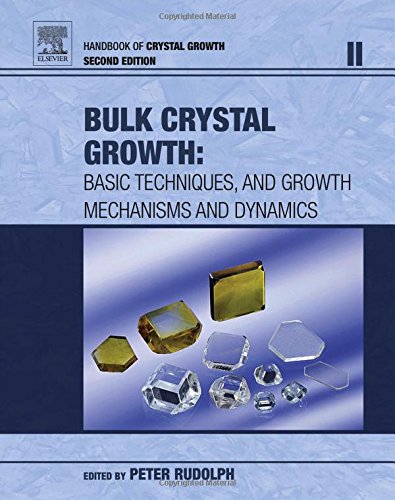

Most ebook files are in PDF format, so you can easily read them using various software such as Foxit Reader or directly on the Google Chrome browser.
Some ebook files are released by publishers in other formats such as .awz, .mobi, .epub, .fb2, etc. You may need to install specific software to read these formats on mobile/PC, such as Calibre.
Please read the tutorial at this link: https://ebookbell.com/faq
We offer FREE conversion to the popular formats you request; however, this may take some time. Therefore, right after payment, please email us, and we will try to provide the service as quickly as possible.
For some exceptional file formats or broken links (if any), please refrain from opening any disputes. Instead, email us first, and we will try to assist within a maximum of 6 hours.
EbookBell Team

4.4
72 reviewsVol 2A: Basic Technologies
Handbook of Crystal Growth, 2nd Edition Volume IIA (Basic Technologies) presents basic growth technologies and modern crystal cutting methods. Particularly, the methodical fundamentals and development of technology in the field of bulk crystallization on both industrial and research scales are explored. After an introductory chapter on the formation of minerals, ruling historically the basic crystal formation parameters, advanced basic technologies from melt, solution, and vapour being applied for research and production of the today most important materials, like silicon, semiconductor compounds and oxides are presented in detail. The interdisciplinary and general importance of crystal growth for human live are illustrated.
Vol 2B: Growth Mechanisms and Dynamics
Handbook of Crystal Growth, 2nd Edition Volume IIB (Growth Mechanisms and Dynamics) deals with characteristic mechanisms and dynamics accompanying each bulk crystal growth method discussed in Volume IIA. Before the atoms or molecules pass over from a position in the fluid medium (gas, melt or solution) to their place in the crystalline face they must be transported in the fluid over macroscopic distances by diffusion, buoyancy-driven convection, surface-tension-driven convection, and forced convection (rotation, acceleration, vibration, magnetic mixing). Further, the heat of fusion and the part carried by the species on their way to the crystal by conductive and convective transport must be dissipated in the solid phase by well-organized thermal conduction and radiation to maintain a stable propagating interface. Additionally, segregation and capillary phenomena play a decisional role for chemical composition and crystal shaping, respectively. Today, the increase of high-quality crystal yield, its size enlargement and reproducibility are imperative conditions to match the strong economy.
Volume 2A
Volume 2B